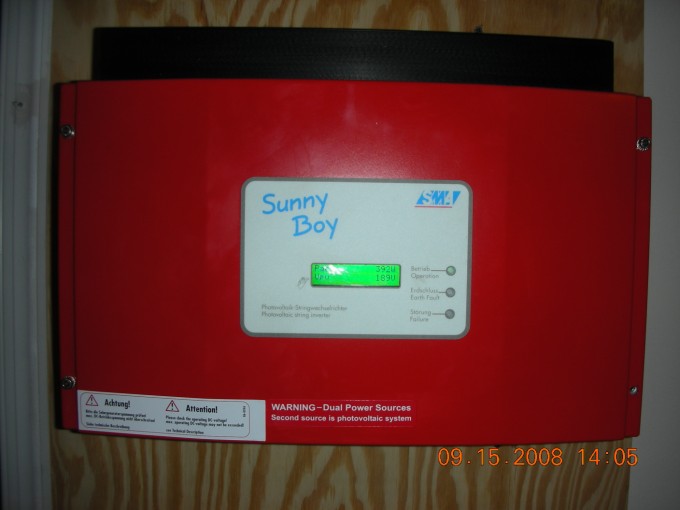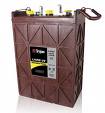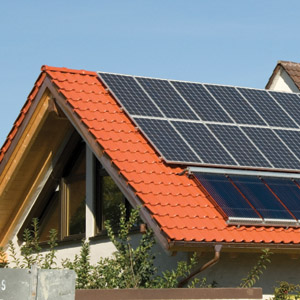Photovoltaic System Design
Considerations have to be given to solar radiation characteristics for each individual site. The design of an efficient system requires a thorough understanding of solar radiation fundamentals. Equipment used, positioning of solar array (panels arranged in a group and configured to match system operating voltages), peak sun averages, and most importantly the loads and duration of their attachment to the system. The methods used for installation should be considered during the design process as this is an extremely important part of an efficient system.
Financial considerations have to be made as well. Does photovoltaic offer you the biggest bang for your buck? Would you save more money and reduce carbon emissions more by just insulating your structure and or utilizing energy efficient appliances with better lighting designs. Photovoltaic investments can pay you back plus some, but you better be sure you are not dealing with companies who just jumped on the wagon. An experienced understanding of electricity not just how to arrange panels on a roof is an important attribute for companies offering photovoltaic systems.
Put our experiences to work for you! We provide services for residential, commercial, and industrial customers. We cover areas all across North Carolina and Virginia.
We also provide consultations for builders and electrical contractors and can assist in furnishing the correct equipment and then help make sure your customers are taken care of by offering comprehensive start up commissioning plans to insure the equipment does what it should without any suprises or disappointments for your customers and their expectations.



IS IT TIME?
PERHAPS, let us HELP!


Solar Radiation Fundamentals
Peak sun hours and the orientation of the solar panel arrays compared to the azimuth and altitude of the sun's magnetic declination are considerations necessary for the efficient design of your system. A site evaluation including a shading analysis must be performed to determine the best location at your site for the array. This in conjunction with your expectations should be the first topics of discussion with your photovoltaic provider.
The Correct Equipment
Selecting the correct equipment can be complicated. Different style panels, sizes, and ratings are just a few of the decisions which will have to be made. Considerations in making the panel choices would be aesthetics, load calculations of attached loads, system voltages, type of system (grid tie, stand alone, or hybrid), manufacturer warranties, and the list goes on. The same choices will be necessary for the inverter (converts direct current voltages to alternating current), combiner boxes, batteries if used, and the charge controller.



Photovoltaic (Solar Panels)
Deep Cycle Batteries
Battery Charge Controller
Photovoltaic Inverter
Efficiency
Efficiency of your system will be determined by good design and then installation. Solar panel equipment choices, positioning of the array, and installation methods will have the biggest effect on the efficiency of your system. In order to achieve your desired return and most times promised pay back, system efficiency must be kept for the life of your system. Careful planning and insight into the future conditions of the system site will go a long way in assisting with maintaining the efficiency goals.
Experience, knowledge, and commitment to quality should be attributes your provider posses.


Only knowledge and experience will deliver efficient systems
Financial Considerations
Whether installing a photovoltaic or other alternative power delivery system, financial considerations should be addressed. It actually may be possible to both save or make more money and reduce more carbon emissions by simpler measures. These measures could be installing insulation or just using more efficient electrical loads. Also typically, if you do not account for available financial incentives, more money can be saved or made, depending on how you look at it, by installing solar thermal equipment to heat water for household usage or to heat your swimming pool.
Cost analysis is an important part of the decision making process. Using a photovoltaic provider who understands the financial issues and has the experience, will be highly beneficial to you. Additionally by doing a correct cost analysis and doing the homework necessary for the design and installation of your alternative system, your expectations can be met.

Solar thermal heating systems come in many different sizes and configurations. Some may not be eye pleasing but they can do wonders for your bank account.
Just by installing better insulation can both safe you money and help to reduce carbon emissions.
Structure Considerations
Existing structure conditions such as the weight bearing limitations of roof framing has to be taken into consideration before placing array systems. The total weight for the array rail system used for installation combined with the solar panels could add up to be more than your roof structure will allow. The condition of the existing framing and roof coverings should be inspected making sure leakage will not occur after the installation of the array. Considerations have to be made for the fastening procedures used in attaching the rail systems. Will the integrity of the existing roof structure afford good fastener connection over time. Alongwith regard to the fastening procedures and integrity of the roof, wind creates more force against fasteners and stresses a roof system even more, so wind is another factor which should be considered.
Inspections of roof systems have to be inspected before additional weight is tied to structure. Wind will contribute to more stress against fasteners and in turn the roof system.


E & W Electrical, LLC
515 Meadowland Drive
Suite 100
Hillsborough, NC 27278
919-245-0200 (office)
919-245-0202 (facsimile)
888-919-5210 (toll free)
copyright 2010 E & W Electrical ** All rights reserved

